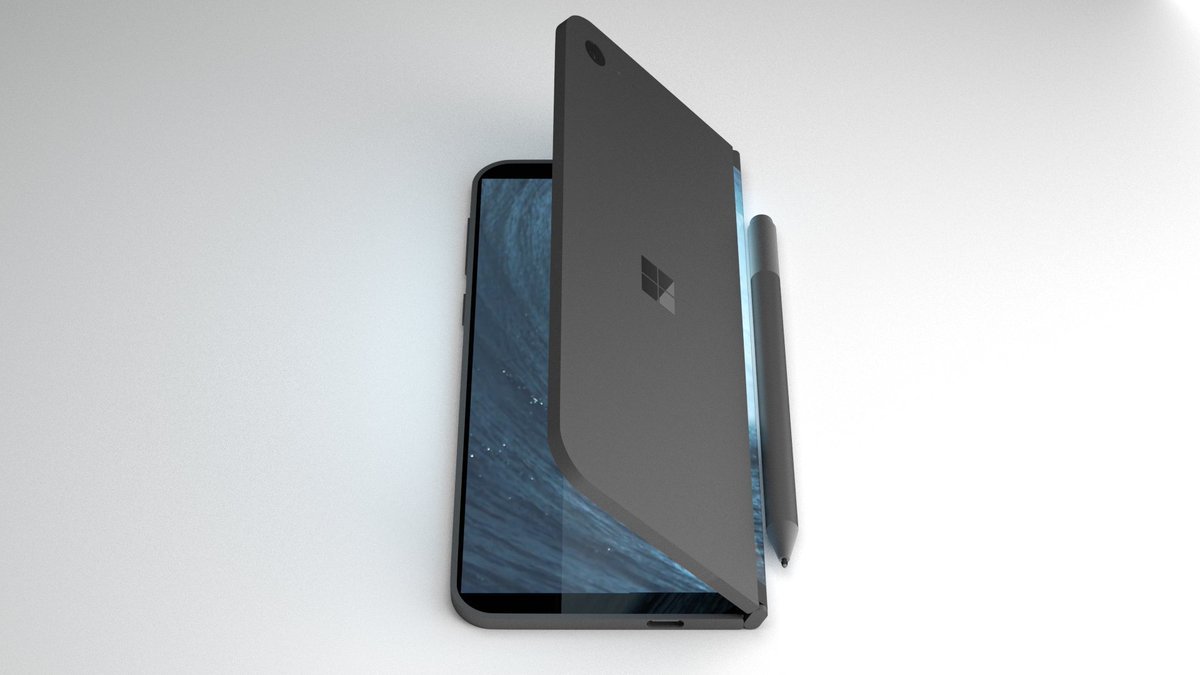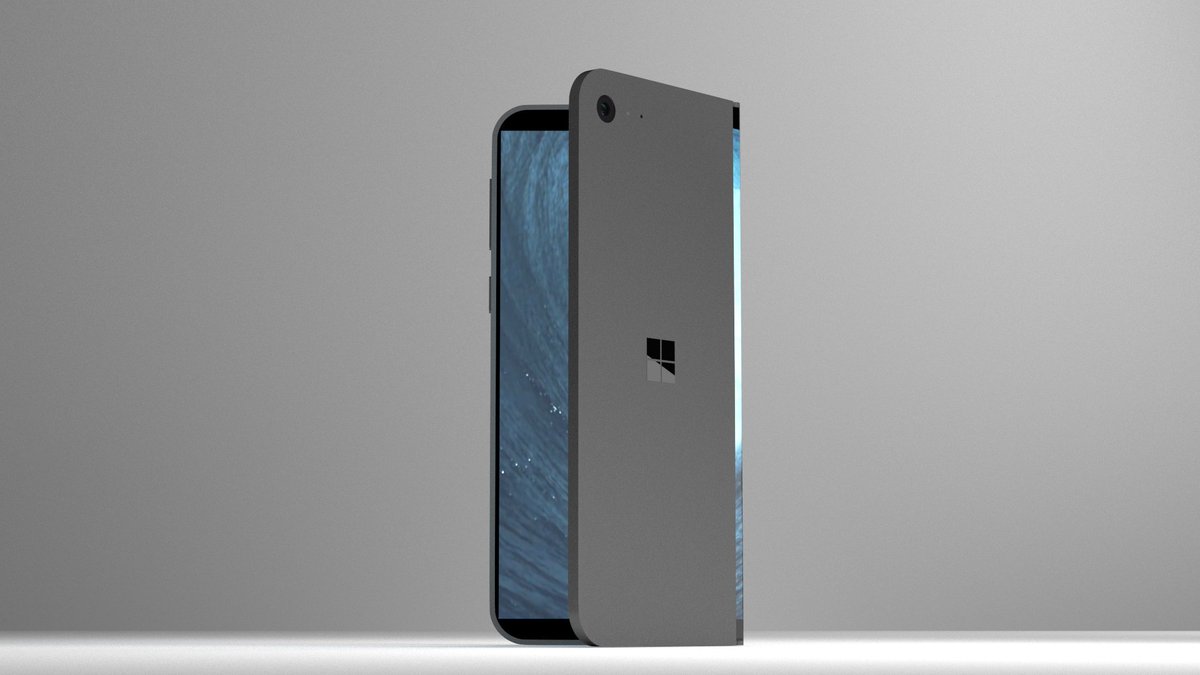Apple's new iPhones suggest the time is right for 'Surface Andromeda'
Apple's new iPhones, with powerful processors, evolving AI, advanced machine learning, and more, suggest the time is right for Microsoft's 'Surface Andromeda.'

I've long asserted that slate-shaped smartphones are not phones, but powerful mini tablet PCs that have telephony as just one of their many functions. What we call "smartphones" are consistently used as touch-centric tablet computers and are today's most frequently used "PCs".
Apple's 2007 iPhone started this phenomenon and introduced mere iterative advances until, arguably, 2017's bezel-less, home button-less iPhone X redesign. This iPhone boasted more advanced silicon, A.I., machine learning (ML) and more, and it introduced "the future of the smartphone." (Apple's wording.) Though heaped in marketing bluster, this 10-year milestone device may represent a transition point between what we categorically accept (or what history will define) as "smartphones" and the beginning of something else.
Admittedly, 2018's iPhone X S is an iterative step for iPhone X. But iPhone's "slow and steady" progression from a 3.5-inch phone-internet device-iPod in 2007, to a 6.5-inch "mini-tablet" with PC-like processing power, impressive storage and RAM and advanced A.I., suggest Apple is evolving iPhone into the pocket PC Microsoft failed to launch. If the market embraces the powerful and expensive iPhone's X S and X S Max, perhaps Microsoft should think very hard on how to bring "Surface Andromeda" (though not yet officially confirmed) to market sooner than later.
10 years and shift
Every 10 years, computing paradigms shift. The 80s: IBM and computer hardware. The 90s: Microsoft's software and productivity. The 00s: Google and search. The 10s: Apple with mobile and apps. Eleven years after the iPhone-induced mobile revolution, we're at the beginning the next shift.
According to analysts like Microsoft Technology Evangelist James Whittaker (above video) IoT powered by the intelligent edge on 5G networks is next. If true, billions of devices will eventually comprise a ubiquitous computing environment that will perceive and interact with us via A.I.-powered cognitive services. At the beginning of this ambient computing shift, mobile devices with more advanced A.I., more powerful processors and greater capacity to "perceive" environments and discern user intent via ML may segue between "smartphones" and whatever personal device we may carry or wear. Apple's iPhone X S with Bionic 12 processor may be that device. Or Surface Andromeda could be if Microsoft plays its cards right.
The iPhone X S's eight-core Neural Engine is capable of five trillion calculations per second, making Apple's Core ML nine times faster than iPhone X's. This enables real-time ML tasks like pattern recognition, behavior prediction, advanced facial recognition for biometric security (Face ID) and playful AR Memojis, environment mapping (AR) and a range of A.I.-supported imaging tech. Many Android phones rival this tech but iPhone's tailored synergy of hardware and software coupled with a refined implementation of "old" and new features deliver an impactful future-focused package.
Get the Windows Central Newsletter
All the latest news, reviews, and guides for Windows and Xbox diehards.
Convergence
The original iPhone introduced a shift by creating synergy between emerging and important tech of its day: the mobile web, cellular connectivity, multi-touch displays, and MP3 players and app models. Apple's 2017 iPhone X stressed a synergy of today's emerging tech: advanced A.I., ML, AR, high-speed broadband and advanced security. The iPhone X S iterates on that.
Apple's problem is that these advances are constrained by a slate form-factor that has not changed since 2007 and a mobile OS that is limited in its ability to accommodate certain computing scenarios that Windows handles with ease. Additionally, from A.I. to ML, AR and biometric security, all of the iPhone X S's defining tech is within Microsoft's ability to implement in Surface Andromeda.
Coupled with the $999 to $1,499 price range for the least expensive iPhone X S to the most expensive iPhone X S Max, users may not be getting as much bang for their buck a similarly priced Surface Andromeda could potentially offer.
Folding phones: The beginning of the end of slate-shaped phones
Time for a change

Technology's evolution is influenced by the tech and how it's used. Since iPhone's 2007 introduction, web-surfing, messaging, gaming, music and now photography, have dominated how these slates are used. Despite how fast, big or expensive they've become, usage patterns have remained virtually unchanged in 11 years. The unchanging form factor, and limited mobile OS, despite convergence of modern tech, doesn't promote new usage scenarios.
As a modern edge device, Surface Andromeda may, like iPhone, create a synergy between emerging tech but deploy it through a context-conforming form factor that encourages diverse use cases. It could potentially by unfolded as a tablet (with limited apps and tablet mode) and digital journal, folded as a phone and docked via Continuum as a PC. Additionally, Windows Mixed Reality and Paint 3D, combined with a mobile 3D scanning app Microsoft introduced in 2016 but has been MIA since, may (according to sources) add unique functionality to Surface Andromeda.
Sometimes, like with the first iPhone, people don't know what they want until they're told. People seem content jumping between phones, tablets to PCs for different tasks. If Microsoft figures out a way to position, push and leverage the unique context-conforming features of rumored Surface Andromeda and Windows Core OS, and the synergy of A.I., machine learning, and mixed reality, it may convince people that one device for all scenarios is what they want.
Related reading
Jason L Ward is a columnist at Windows Central. He provides unique big picture analysis of the complex world of Microsoft. Jason takes the small clues and gives you an insightful big picture perspective through storytelling that you won't find *anywhere* else. Seriously, this dude thinks outside the box. Follow him on Twitter at @JLTechWord. He's doing the "write" thing!

